Kimono Flea Market ICHIROYA's News Letter No.667
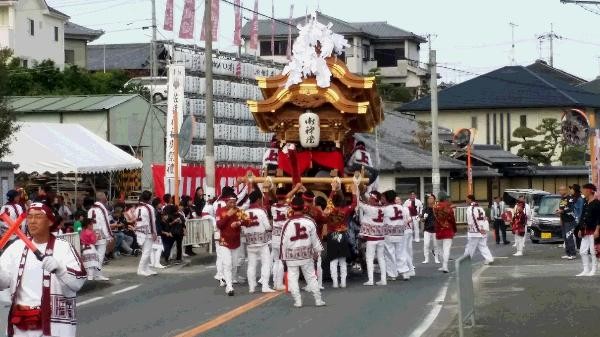
Dear Ichiroya Newsletter Readers,
Hello everyone! This is Yoko again. Minasan ogenki desuka?
In this newsletter, I would like to talk about the Matsuri event we had over the weekend and also my must-have winter heating device, Kotatsu!
The past weekend, Danjiri Matsuri was held in our town.
It is held once a year in autumn, and it is unlike any other Matsuri with little food stands and Odori dance with Yagura.
This Aki(autumn) Matsuri involves huge wooden floats with lantern illuminations. Mabushii!
Each small section of our town has its own Danjiri float and team, and members pull their float around the town singing and dancing.
Friends, families, and audiences follow and walk behind each float. This continues for three days!!!! Ah-shindoi
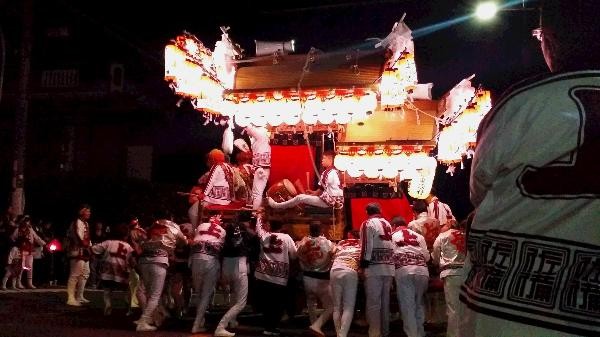
A few members sit inside the float with a couple of guys on top of the roof!
One of the men inside sings local folk songs and the others play Matsuri instruments, such as a flute, drum, and bells.
The guys on the roof cheer and instruct the float's direction. (at least I think so...)
Younger members on the ground pull the float and group of girls dance and cheer around it.
These girls are called 'Ledi-su(ladies)' and my daughter is one of the Ledi-su in our section of town.
They wear matched Happi, Momohiki pants, Haramaki and Jika tabi. They work really hard to look very Kawaii together.
Danjiri floats do not look anything similar to Gion floats of Kyoto.
We are more decorative and LOUDER with singing, dancing and cheers.
I am not originally from this area and where I am from, Nara, we do not have the same type of dashy Matsuri...
So to be honest, I do not get the point of enjoyment as much as the locals.
My daughter, on the other hand, 'LOVES' I mean madly in LOVE with the Aki Matsuri.
She starts counting down right after one ends!, like she can't wait for the next one to begin!
She dresses up like a little queen with heavy make up and mass volume hair!!!

I enjoy watching my daughter enjoy the Matsuri, and if I were young like my daughter, I am sure I would make the most of it. (maybe)
Above all, I think it is a good thing to have something in life that can be really enjoyed!! (right?)
Enough about Danjiri!
Now that it is almost end of October, weather is definitely shifting to fall(almost winter?) and it is getting colder by the day!
If you are planning a trip to Japan soon, make sure to bring a jacket! You will definitely need it!
Leaves are changing color beautifully now, and leaves of Kaki(persimmon) and Mikan(orange) trees in my garden are falling.
Kaki are turning orange and getting ready to be pricked soon. Can't wait!
My beagle dog Marin just loves Kaki, and whenever a bad Kaki falls, she runs to it.
I sometimes find her looking up the Kaki tree staring, sniffing and just waiting... so cute. :)
As I am really a Samugari person, sensitive to cold, before the cold winter starts, I am thinking about taking out my Kotatsu table.
Kotatsu is my favorite heating device, but it does not heat up the whole room like central heating system.
It is a wide low table with a heating device inside which is covered by a Futon or heavy blanket.
Once you put your legs inside this table, you will never want to come out!

Almost every household in Japan has Kotatsu, and in my house, Kotatsu becomes where we eat, watch TV, kids study, kids and Marin naps in winter.
So pretty much, it keeps us not just warm but together in cold winter. :)
Do you have a similar place or item as Kotatsu in your country?
The Kotatsu I have is electric and it is really easy to use, just turn on the switch and it heats up quickly inside the table.
But what did people do to stay warm in winter when they did not have electricity or Kotasu?
I found that Kotatsu-like device? has been around in Japan for a very long time, and the very first Kotatsu was invented in Muromachi (Muromachi Period (1392-1573)!
First it was just a small Irori 'fireplace' with a wooden framing around it and put Futon over it.
The fireplace was not like what you are imagining with flaming fire. Nono!
Back then, people mainly used coals, so used coals were placed in an Irori bowl, and supposedly it was at a very comfortable temperature.
No wonder we are fond of Kotatsu! It has been around and keeping us warm and together for centuries!
It is our nature to love Kotatsu! ne?
But on colder days, just the Kotatsu is not warm enough! so, I wear my Dotera with my legs in Kotatsu, then I will be perfect! hahaha
Here are some items you can use in winter, such as Dotera and velvet shawls, to keep you warm and comfortable.
http://www.ichiroya.com/item/list2/344453/ Kimono Coat
http://www.ichiroya.com/item/list2/344455/ Kimono Coat
http://www.ichiroya.com/item/list2/344457/ Kimono Coat
http://www.ichiroya.com/item/list2/344143/ Michiyuki Coat
http://www.ichiroya.com/item/list2/343380/ Michiyuki & Shawl Set
http://www.ichiroya.com/item/list2/321019/ Kimono Shawl
http://www.ichiroya.com/item/list2/319415/ Kimono Shawl
http://www.ichiroya.com/item/list2/254996/ Kimono Shawl
Hope you enjoyed my newsletter! Arigato gozaimasu for reading till the end. :)
Wishing you a lovely new week!
Kimono Flea Market ICHIROYA's News Letter No.666

Dear Ichiroya Newsletter readers,
Hi! This is Nagisa from Ichiroya. I was also named after my birth month. I was born in midsummer. So, I was named "Nagisa" which means an ocean or beach in Japanese. To tell the truth, I don't like summer very much. However, summer has gone and Football season has come! I like winter the best of all seasons, because Football season reaches its climax. Oh well, unfortunately American Football is a minor sport in Japan. (even through it is a lot of fun!) Two or three times a week, I wake up at 5 a.m. to watch the games before I go to work. Sleepiness never bothered me anyway!
By the way, I have an older brother and he also loves winter and winter sports especially snowboarding. During the winter, he moves to snowy region in Japan. Nagano, Fukushima, and now he is in Hokkaido. He lives and works there since last year. Have you ever heard of Hokkaido? Hokkaido is located in the northernmost in Japan, so you can enjoy skiing, snowboarding, and some other winter sports there with good snows. Not only winter, the other seasons are also nice. Mother Nature still remains there, so you can see a magnificent view wherever you are. Untouched nature of Shiretoko, lavender field of Furano, unkai (a sea of clouds) of Tomamu, blue pond of Biei, and there are some more spots I want you to visit! I asked my brother to send photos which shows great nature of Hokkaido for this newsletter. He certainly sent some photos to me, but he is also in these almost photos. Though I didn't mean to introduce my brother to you, apparently he wanted to say hello to the world. Sorry but my charming brother blending in with beautiful scenery of the top photo.
I'll show you one more photo instead.

Here it is. I took the photo last Monday at Umami park in Nara. (located next to Osaka) There are various autumn flowers such as cosmos, dahlia, salvia, and so on. As you know, autumn flowers or grasses design is used for lots of Kimono and Obi. Some are here.
[ Obi ]
1) Phoenix & Autumn Flowers Pattern Fukuro Obi
http://www.ichiroya.com/item/list2/344256/
2) Autumn Flowers on Cloud Pattern Fukuro Obi
http://www.ichiroya.com/item/list2/325197/
3) Silhouette of Lush Autumn Hill Pattern Fukuro Obi
http://www.ichiroya.com/item/list2/344277/
[ Kimono ]
4) Autumn Flowers in Mist Design Houmongi Kimono
http://www.ichiroya.com/item/list2/343034/
5) Vibrant Autumn Grasses Pattern Komon Kimono
http://www.ichiroya.com/item/list2/341622/
6) Butterfly & Autumn Flowers Pattern Vintage Kimono
http://www.ichiroya.com/item/list2/341609/
Umami park is a large park with lots of nature. So I sent a couple of photos which I took there to my brother while he is saying 'I'm in Hokkaido!' However the lie came out soon. He says that there is no one else in short sleeve T-shirt. In Hokkaido, winter has already come! Please take care of yourself in preparation for coming season. See you next time!
Kimono Flea Market ICHIROYA's News Letter No.665
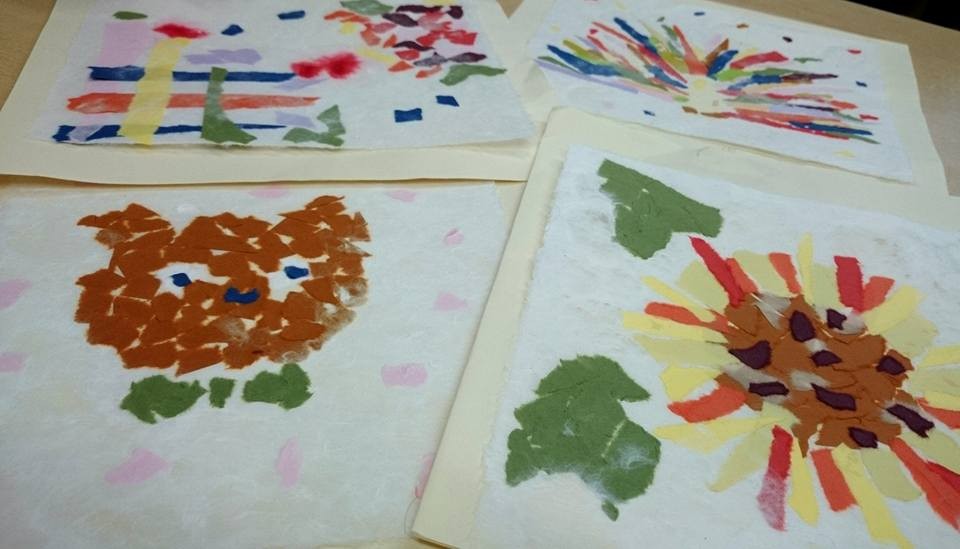
Hello, ICHIROYA News Letter Readers!
It's my turn (ツ)_/¯ YEAH! This is Mei (ツ)_/¯ Doumo! Guess what, why my name is "MEI". I'm sorry for bringing this subject all of sudden. I'll give you an answer later! hehe Anyway, how have you been? Thank you for some reply to my Karaage T-shirt. Your message and reply make us motivate. Thank you! Arigatou! Ookini!
The other day, I went to the university which I graduated to join events with my friends. (Acutualy, the events are for high school students to visit and experience college life. And we pretended to be one of them. But... uh-oh. Some staff who are university students have sharp eyes. haha Anyway, we have experienced some manufacturings. Making Washi(Japanese paper) with acting, 3D figure of own face by using 3D printer with plaster, and making eco-bag with own painting by using silk screen machine. Those were really interesting and exciting experiences. My face of 3D is so realistic but just weird. Do you want it insted of me? Just kidding! I was especially impressed by Washi making. So I searched about Washi for using to Kimono and Obi. There are two kinds of using Wahi to Kimono. One is "Kamiko", the other one is "Shifu". Kamiko is made from just Washi. It is used for such as Kabuki or traditional some events. On the other hand, Shifu is made from threads which are made from Washi. It is still used for summer Kimono now. Both of them have really interesting and long histories. And today, I wanna introduce how to make Washi at your home! You can do it with your children easily, with items at your home. And it takes just about 1 hour.
【 Materials 】
Paper milk pack(tear in two and soak in water in advance)/ Plastic pack of tofu(x2)/ Net for kitchen drain port (can be stockings)/ Mixer/ Chopsticks/ Bucket/ Pushpin/ Towl/ Water
【 How to make 】
1) Cut the net as the shape of the bottom of the tofu pack.(x2)
2) Make some holes with a pushpin to the bottom of the tofu pack.
3) Tear off pulps of the surface of the milk pack with chopsticks.
4) Put the pulps and water into the mixer and mix them.
5) Put the cut net (or stocking) on the tofu pack, and pore the mixed pulp.
6) Put the other net(or stocking) on (5), and put the other tofu pack on it to drain.
7) Take it out from the tofu pack with the net together.
8) Wrap it up with the towl and dry it.
and... DONE! It's so easy and intersting, isn't it? After making your own washi, you can decorate and arrange it. If you put some origami or some motifed paper on it before drying, washi becomes more lovely! Or, you fold the washi over and over, then soak the corners in the colored water. You can make "shibori" like pattern on the paper. When you make some, please show us! :D By the way, there are many museums of paper in Japan. Have you heard about that? We also have many spots where you can experience to make Washi. Why don't you experience our Japanese traditional "Washi" making? If you are interested in Washi, please search these words, "washi" or "shifu". You can find some items. Some are here.
[ Washi ]
http://www.ichiroya.com/item/list2/339007/
http://www.ichiroya.com/item/list2/233305/
[ Shifu ]
http://www.ichiroya.com/item/list2/306440/
http://www.ichiroya.com/item/list2/260402/
http://www.ichiroya.com/item/list2/260041/
Well, autumn makes me go to art museums! Don't you feel so? I'm planning to go to some art festivals with my friends in this autumn. For example, "Rokko Meets Art" at Mt.Rokko of Kobe in Hyogo. Another one is "Setouchi Triennale" at some islands of Seto Inland Sea. I have been to Setouchi Triennale twice before, I really really want recommend you there! Do you know Yayoi Kusama? Her famous dots pumpkin is in one of those islands, Naoshima. Especially I was so impressed by Teshima Museum in Teshima. It's my favorite. Just amazing! I can't explain with only my words. Just go and feel(not see) it with your heart. You will forget the time passing. And your tears may fall. Oh, now you have many places to visit! hahaha Autumn is the best season to sightseeing, but winter is also nice, and spring... Yeah I know every season is nice to visit! Someday please come to visit and enjoy Japanese life with ICHIROYA's Kimono!
Now... it's time to say see you (NEXT TIME!). Thank you for always reading until the end. Have a wonderful days, October!
Mei (I was named after my birthmonth, "May"! Did you get the right answer?)
Kimono Flea Market ICHIROYA's News Letter No.664

Dear ICHIROYA Newsletter Readers,
Konnichiwa from ICHIROYA. This is Mitsue. Ogenki desuka?
In Osaka, it is getting cooler day by day and I'm enjoying the best season of a year! Yes, autumn is the harvest season with full of delicious foods. Can you guess what's the most favorite autumn food in Japan? Surely, most Japanese will answer it is
Matsutake, a kind of mushroom. It smells soooo good!! The domestic one is so expensive. Matsutake dishes show up on the dining table only once or twice a year at my
house. We still have other delicious foods such as pears, grapes, sweet potatoes, new rice and so on. Oh, I have to be careful not to be overweight...
Reading books is one of my favorite spare time, and autumn is the best season for reading. The other day I read an amazing book about a daily life of people in Edo (present Tokyo) in Edo period(1603-1867), and I found an interesting article.
"The best 3 guys who were stylish and good looking in Edo."
(1) Hikeshi-a fire fighter
(2) Rikishi-a sumo wrestler
(3) Yoriki-a government official of the town
(1) Hikeshi-a fire fighter
Fire fighters had leadership to settle down the troubles in the town not only fires. They do not talk too much, and they were stoic and courageous. Edo firefighters were equipped with heavy, multi-layer jackets for their protection. The jackets got wet before a
fire-fighting mission. Often splendid decorations and characters were applied to identify the brigade of its owner. By and by, the decorations went beyond the practical use and became more artistic. Another indispensable equipment was the standard, called "matoi". Each brigade had a different shape of matoi for identification. It also served as a meaning of communication like flags on a ship.
Apart from jobs, they willingly wore the kimono with solid or tiny pattern to be looked older than their true age.
(2) Rikishi-a sumo wrestler
During that age, physical strength was an important skill for warriors, and samurai families began to employ sumo wrestlers. It has been written that the warlord Oda Nobunaga was such a devotee of the sport that he gathered wrestlers together to hold tournaments every year.
Sumo wrestlers also had disposition of a gambler and a dynamic mind. Further more, they were strong and gentle at the same time. They wore the kimono with large pattern which shows his existence.
(3) Yoriki-a government official of the town
Yoriki provided administrative assistance at governmental offices. The ones called machikata yoriki were in charge of police under the command of the machi bugyo (town magistrate). In Edo city, there were about 25 yorikis working each for the two machi bugyo.
They wore kimono stylishly with large Kataginu (sleeveless robe) and Hakama walking around the town to patrol.
According to the sensitivities of Edo people, these best three ones were very popular among ladies.
We can see kimono, juban(undergarment) and obi with the pattern of them.
Unfortunately, they are all sold out, so please check our new items sometimes.
In addition, believe it or not, 90% of pet in Edo was CATS according to the book.
I am also one of cat lovers, and a kitten became a member of my family 5 months ago. A stray cat gave a birth to five kitten in my friend's garden, so I took one of them back to my house.
I named him 'Hatch' and now he became a part of my life.
Hatch playing with Godzilla.

Cat design is very popular among kimono lovers. As soon as the items with cat design on sale, most of them are sold out. Here are still some amazing items on sale at Ichiroya!
*Kimono
http://japan.ichiroya.com/item/list2/341989/
http://japan.ichiroya.com/item/list2/340624/
*Obi
http://www.ichiroya.com/item/list2/341295/
http://www.ichiroya.com/item/list2/340450/
http://www.ichiroya.com/item/list2/238484/
This one is so cute!
*Juban
http://www.ichiroya.com/item/list2/234804/
There's something special in cats, don't you think so? So, they are believed to invite good fortune from old times. If you wear cat designed items, cats will surely bring you
happiness.
Thank you so much for reading. arigato gozaimasu!
キモノッテ 在庫ありの商品です(第2弾)
***京袋帯
モチーフ:鳥とチューリップ カラー:黒 大人の香り!

鳥とチューリップ カラー:ピンク 甘く優しい香り!

そのほか 元気のでるキュートなイエロー!や、大人の紺色 (アンティークの世界へ用こそ!)もございます!


***半幅帯
フルーツ カラー:ピンク 他のカラーもそろっております!

***帯揚げ
ぼかしと蝶02 カラー:薄紫 たくさん見せたい!そんな帯揚げサッシュ!

***半襟
モチーフ:縞にりんご カラー:白 小さなアップルを襟元に!

幾何学にりんご カラー:紫 なんといってもアップルな気分!

モチーフ:水玉に蝶と桜 カラー:白 水玉も蝶も!はずせないんです

モチーフ:縞に鳥とバラ カラー:茶色 秋色ストライプにも鳥とバラ!

モチーフ:縞に蝶と桜 カラー:紺色 ストライプにも 蝶!

モチーフ:鳥とバラ カラー:赤 クリスマス?いえいえレッドはいつでも!

Kimono Flea Market ICHIROYA's News Letter No.663
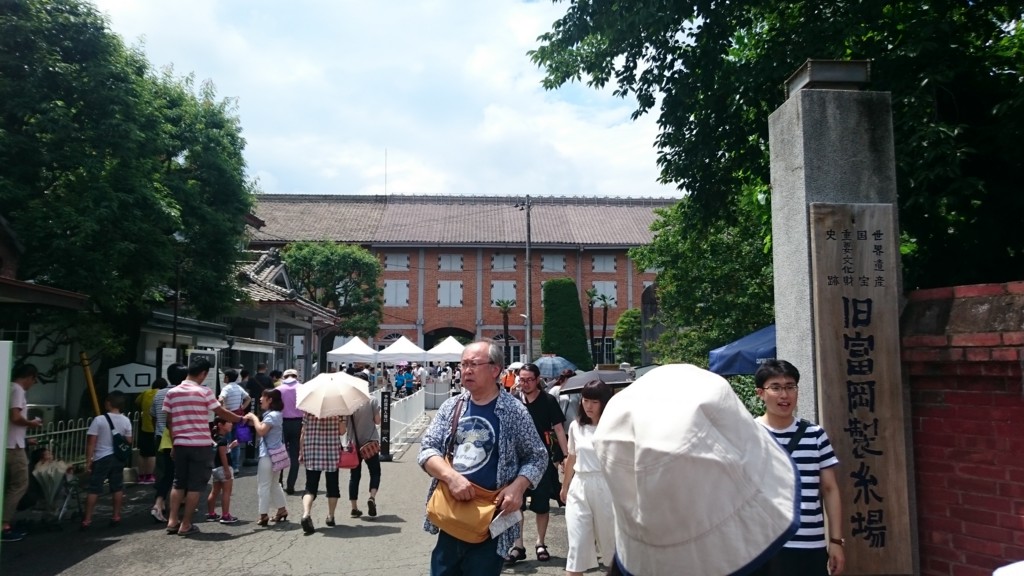
Hi, newsletter readers. This is Mari.
I say summer is over in Osaka. I put all my Yukata and
summer kimono away for this season. Although summer is
short, I enjoy wearing them so much.
I received emails from some of readers who tried the
"Fusen-Otaiko" obi tying style after they read my last
newsletter. I'm glad that I helped them to try new
look of summer!
I visited Tomioka Silk Mill on the other day.
It is located north east of Tokyo. It takes 1hour and half
by Shinkansen(Bulit train) from Tokyo.
It is a world heritage and national treasure.
Silk was the best exported item of Japan in
Meiji period(1868-1912). Believe it or not, Japan was the largest exporter of silk at that time. When Edo period(1603-1867) ended, Japanese government promoted modernization of industries and technologies to achieve equal status with Western countries.
Exporting silk was the best way to gain foreign currency at that time. It was necessary to build a modern, western style silk-reeling factory to produce high quality silk which fulfill the Western countries requests.
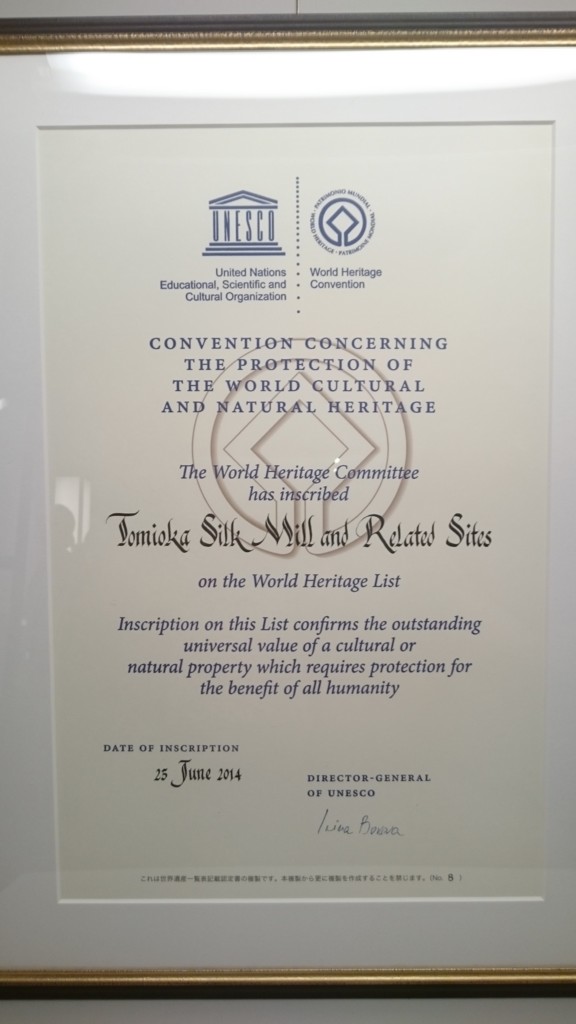
There were five reasons why Tomioka was chosen to build the
government management huge silk mill. There were five reasons why Tomioka was chosen to build the mill.
1) Sericulture was already prospered in Tomioka.
So that, there were good quality cocoon there.
2) A large land was available to build the mill.
3) There was enough clean water which was necessary for
producing silk from a nearby river.
4) Coals and power steam engines were available in the
nearby towns.
5) Local residents agreed to the construction of a factory
directed by foreigners.
The guide who gave us a tour of the facility said that the #5 was the most difficult condition which Japanese government had hard time to fulfill. Japanese people were not used to see foreigners back then. So, people afraid to have foreigners in their town. Tomioka, a very small town, was the only one site which fulfilled all the condition among other candidate sites.
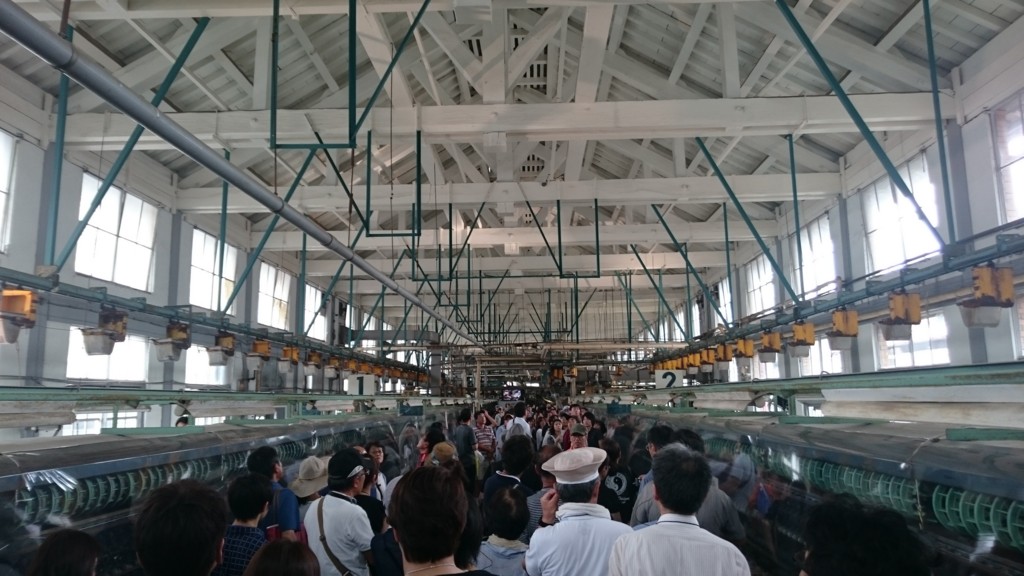
Japanese government built the mill, and hired a French director and engineers.
Even after they built the huge mill, then the government had hard time to gather young ladies who work at the site. Again, they afraid to work with French leaders.
Later, a couple of hundreds girls worked at the mill.
They came from all over Japan. After they worked hard and
learned how to reeling silk, they went back to their home and
taught their technique to others. That movement supported to produce high quality
silk, and make Japan wealthy and strong.
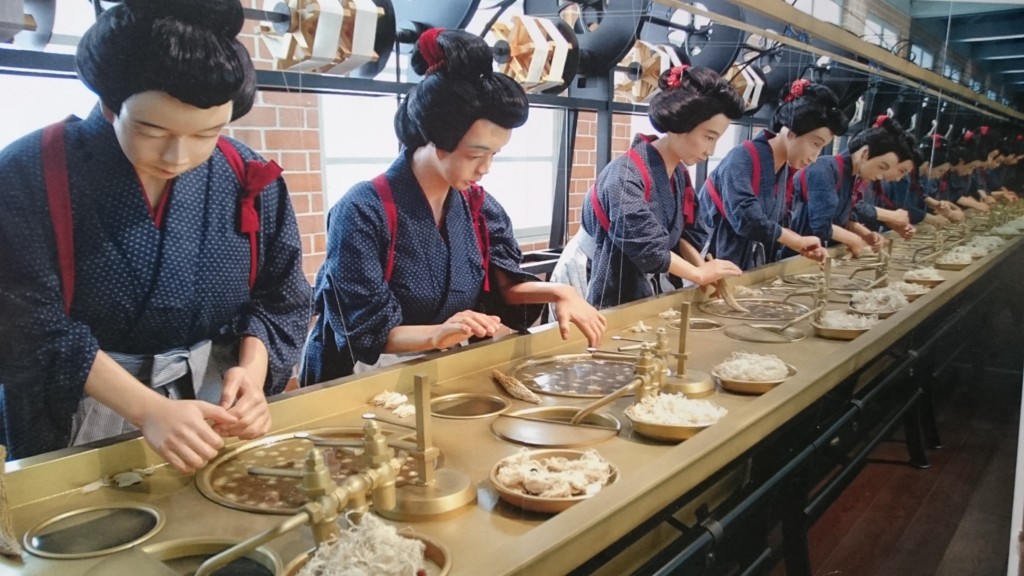
We, Japanese people, were wearing Kimono at that time. As you already know, most of kimono and obi are made from silk. Japanese people used to grow silk warm, spin yarn, weave silk, then sew kimono at home. Silk and kimono were very close to our life. Visiting Tomioka Silk Mill reminds me how close silk was to our life back then. I need to put my cell phone away and spend more quality time in kimono!
The tour was very interesting and educational. I learned a lot about history of Japanese silk. Although the mill is no longer in function, Tomioka is still one of the major produce centers of silk in Japan.
Why don't you stop by the mill if you ever have a chance to visit Japan with Japan Rail Pass!
Official web site of Tomioka Silk Mill
http://www.tomioka-silk.jp.e.wv.hp.transer.com/tomioka-silk-mill/
******************************
(There is a short note about Junko- who made cute umbrella, bags and dress from one piece of yukata. Her sister is a jewelry artist and her exhibition is held in KYOTO SAGA UNIVERSITY OF ARTS.
If you happen to be near Arashiyama, Kyoto and if you are interested in handmade jewlry, Junko's sister, Ryoko Hayashi will be there showing her work!) from Sep 24 to Oct 30.
「林遼子ジュエリー 祈りの形象」|イベント|学校法人 大覚寺学園 京都嵯峨芸術大学 京都嵯峨芸術大学短期大学部
Kimono Flea Market ICHIROYA's News Letter No.662
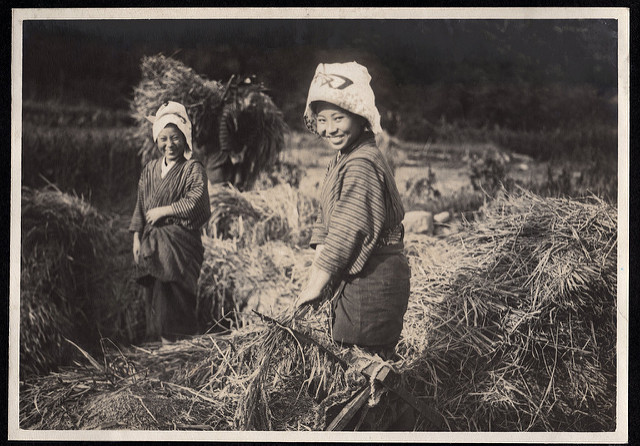
Dear Ichiroya Newsletter Readers,
Konnichiwa from Yoko again! Ogenki desuka?
Hope everyone had a nice summer! (for those in the southern hemisphere, enjoyed your winter?)
Well, it is very difficult to write a newsletter after Nagisa's story about Junko's amazing crafts work.
See, I live a very low profile life.... I am just an ordinary working mom!!! (sigh)
Demo.., here I go.
As you know, Ichiroya takes two long holidays a year at Obon and Oshogatsu.
The past month, our office was closed for Obon for one whole week!
During every Obon holiday, I go to my parents' place in Nara and meet up with my brother's family to visit our family grave together.
For those who does not know Obon, Obon is an annual Buddhist event for commemorating ancestors. .
It is believed that each year during Obon, the ancestors' spirits return to this world in order to visit their relatives.
Sounds rather scary, but it is pretty much a family get together time(dead or alive?) of the year.
I am fortunate to still have a Furusato(home) so close, with families to meet at every Obon. Kansha!
Oh, and of course, I brought Marin(my beagle) to my parents' place as she is a part of our family.
There used to be a Shiba dog named 'Hello' at my parents' place, but he passed away last summer, so I am sure Marin enjoyed 'Hello' again on this past Obon.
Did I ever mentioned that my grandfather used to have an antique store in Osaka?
Antique for him when he was young must have been things from Meiji Period(1868-1912) or earlier.
When I went to see him at his place when I was a child, I remember he had many old clocks, furniture, etc..
I was only a child, so I did not know what those old things meant, but if I see those things now, I am sure I would scream!
Speaking of antique things, have you ever heard of Boro? which also read as 'Ranru'?
It comes from a Japanese word 'Boroboro' which literary means ragged, battered or beat-up in Japanese.
In old times, people had put scraps of used fabrics and patch worked them together to make a cloth or clothes, and they were reused and repeated its process but cherished for generations.
When it is torn and become Boroboro, another ragged fabric was applied and stitched over to strengthen.
However, after many years passed, those retouched surfaces which appear smudged, raved, and look even more 'Boroboro', somehow are starting to look quite appealing to the modern eyes!
Nowadays, Boro are known as 'unintended' art or 'Mottainai' art and very much valued and admired by many designers and artists all over the world.
We are proud to say that Boro has become an universal word and a form of 'art'. Subarashii!!
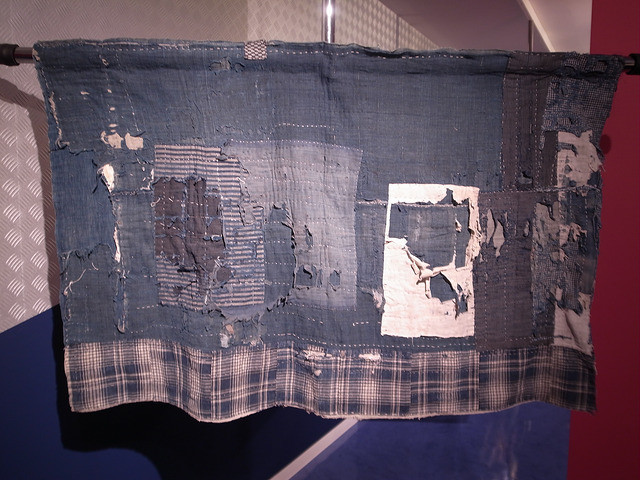
[BORO]
I have seen a Boro become a wall hanging, couch cover, or even a modern stylish Jacket!
Once what was dirty with no value is now what everyone seeks as an art article.
My grandpa maybe had some Boro in his store, but I am sure it was not for sale.
They were probably covering the floor or used as a dust cover. Only if he knew what I know now!!!
Here are some amazing Boro we have at Ichiroya!
http://www.ichiroya.com/item/list2/296742/
http://www.ichiroya.com/item/list2/312274/
http://www.ichiroya.com/item/list2/304629/
http://www.ichiroya.com/item/list2/315795/
http://www.ichiroya.com/item/list2/281462/
http://www.ichiroya.com/item/list2/329014/
http://www.ichiroya.com/item/list2/328985/
http://www.ichiroya.com/item/list2/109883/
There are so many more!, just look up under 'Ranru' or 'Boro' as keywords.
Thank you so much for reading! arigato gozaimasu